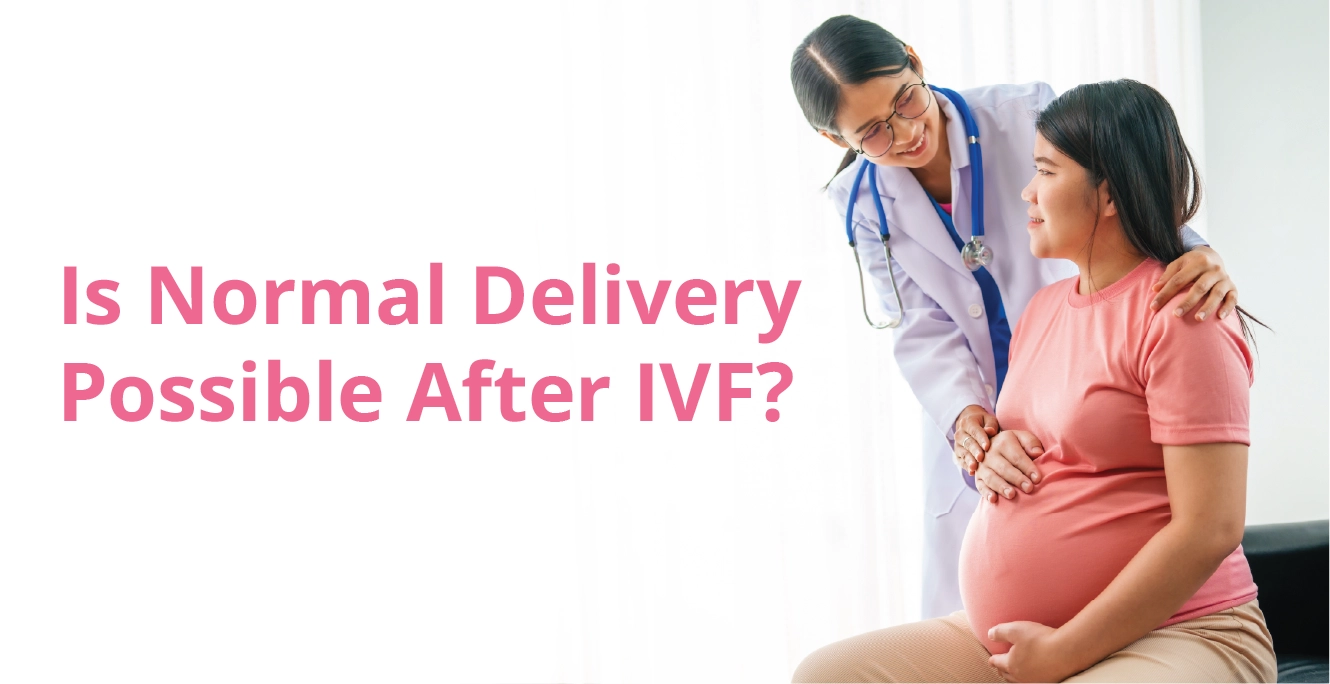
HCG Levels After IVF Frozen Embryo Transfer

Table of Contents
Navigating through IVF, particularly the journey after a frozen embryo transfer (FET), brings a lot of anticipation and queries, especially regarding hCG levels. If you are curious to know, “What should my hCG levels be after an IVF frozen embryo transfer?” or “How does my hCG level affect my chances after a successful IVF frozen embryo transfer?” In this article, let’s understand the significance of it and how hCG levels play a critical role in your post-IVF frozen embryo transfer journey.
What is hCG?
Human chorionic gonadotropin (hCG) is pivotal in confirming pregnancy and is also referred to as the pregnancy hormone. Post conception, hCG plays a crucial role in thickening of your uterine lining and supporting embryo development; it also signals your body’s readiness for pregnancy.
To successfully continue the pregnancy, this also regulates the function of ovaries stimulation while producing progesterone and the optimal amount of estrogen as an indication for the body to stop menstruating.
What are Normal hCG Levels?
The normal levels of hCG can vary significantly depending on the stage of pregnancy. Here’s how hCG levels typically change during different weeks of pregnancy:
| Stages of Pregnancy | hCG Levels |
| 3 Weeks | 5–50 mIU/mL |
| 4 Weeks | 5–426 mIU/mL |
| 5 Weeks | 18–7,340 mIU/mL |
| 6 weeks | 1,080–56,500 mIU/mL |
| 7-8 weeks | 7,650–229,000 mIU/mL |
| 9-12 weeks | 25,700–288,000 mIU/mL |
Generally, hCG levels are used to determine the status of the pregnancy and to keep an eye out for any possible pregnancy complications, including miscarriages or ectopic pregnancy. Therefore, it is always advisable to consult a fertility expert for a personalized analysis of hCG levels to avoid potential risks.
What Are Normal hCG Levels Throughout Pregnancy After IVF Frozen Embryo Transfer?
Knowing how hCG levels change and having patience is essential for navigating the early stages of pregnancy, particularly following an IVF frozen embryo transfer (FET).
Let’s walk through this process day by day, focusing on the crucial first two weeks post-embryo transfer when hCG levels become a ray of hope and information.
Here are the typical levels of hCG that patients can expect after an IVF-FET. All numbers are calculated at milli-international units per milliliter (mIU/ml):
| hCG Levels | Results |
| </= 5 mIU/ml | Negative result/no pregnancy |
| =/> 25 mIU/ml | Positive result/pregnancy |
Day 1-14 Post-Transfer:
After an IVF FET, we enter a two-week wait period. Since hCG trigger shots are not used in traditional IVF, our main indicator of early pregnancy is the normal rise in hCG levels in your bloodstream. An expert measures these levels with a beta-hCG test about two weeks after the transfer.
Day 13 Post-Transfer:
At this point, hCG levels provide us with the first meaningful information. A good start is indicated by levels over or equal to 25 mIU/ml, whereas levels below 5 mIU/ml often suggest no pregnancy. Also, we might begin to weigh the happiness of a successful implantation against the possibility of miscarriage. For example, at this stage, values less than 85 mIU/ml may indicate an increased chance of miscarriage. On the other hand, values higher than 386 mIU/ml may indicate a robust, healthy progression.
Furthermore, Day 13 can provide us with early indicators as to whether you might be expecting one or more children. 339 mIU/mL or less is suggestive of a singleton pregnancy, but 544 mIU/mL or more is indicative of multiples.
Day 15-17 Post-Transfer:
It is important to monitor the doubling of hCG levels at this time, as this is a normal indicator of embryo development. Two days following your first positive test, the hCG level should ideally reach at least 50 mIU/ml, indicating a promising development for your pregnancy.
Day 17:
An hCG value above 200 mIU/mL is another positive indicator, suggesting the pregnancy is developing well.
Remember, every woman’s journey through IVF and pregnancy is unique. The rate at which hCG levels rise and the absolute values can vary widely. That’s why it’s essential to have ongoing monitoring by your fertility specialist to understand what these levels mean for you specifically.
What Factors Can Affect hCG Level?
Here’s a quick look at what factors can affect and make these hCG levels vary:
- Gestational Age: This age refers to how far along you are in pregnancy, the hCG levels increase and hit their peak around weeks 10 to 12 and then start to become regular.
- Expecting twins or more: Your hCG levels might be on the higher side because each little one adds to the hormone count.
- Molar Pregnancy: Sometimes, unusual pregnancy conditions like molar pregnancy can increase your hCG levels through the roof in ways you wouldn’t expect for a typical pregnancy.
- Ectopic Pregnancy Alert: If the pregnancy is taking a detour and not nesting in the uterus like usual, hCG levels might not rise as expected, so keeping an eye on this is key.
- Maternal Side Influence: Believe it or not, your age and weight can play a part in your hCG levels. In addition to that, how your body decides to start the pregnancy clock (i.e. implantation timing) can make a difference too.
- Medication Mix: Fertility medicines might impact your hCG levels, so it’s something to consider when interpreting your results.
- Implantation Timing: If the dates of your pregnancy aren’t picked right, it could shake off your hCG reading expectations.
- Incomplete miscarriage: In tough times, like an incomplete miscarriage, hCG levels can be confusing and need careful monitoring.
- Placenta-related issues: Sometimes, the placenta itself can influence your hCG levels, especially if there are complications.
Why is Pregnancy Testing Necessary After IVF-FET?
After an IVF frozen embryo transfer, pregnancy testing is an essential part of assisted reproduction. This test is usually conducted during the “two-week wait,” which occurs 10–14 days following the embryo transfer. The main objective of the test is to determine the concentration of beta-human chorionic gonadotropin (hCG) in the urine or blood.
The successful implantation of the transferred embryo in the uterine lining is indicated by a positive pregnancy test result. This is a thrilling turning point in the process of becoming a parent. To verify the viability and advancement of the pregnancy, a proper analysis, including monitoring with blood tests and ultrasounds, is necessary.
A negative test result, on the other hand, might be very upsetting, but it’s crucial to keep in mind that IVF success rates differ. Therefore, talking to your fertility doctor can be a solution; they will assist you with the best course of action, which might include doing more IVF cycles to boost the chances of a viable pregnancy.
Conclusion
Human chorionic gonadotropin (hCG) is also known as pregnancy hormone which thickens the uterine lining and supports embryo development by stopping menstruation. This article gives information about hCG levels after IVF frozen embryo transfer. It ensures you make informed decisions as you begin your journey to become a mother.
Birla Fertility & IVF is dedicated to providing you with high-quality service and cutting-edge fertility treatments. Book an appointment with us by calling the mentioned contact number or filling in the form with the required details. We will help you with individualized guidance or talk to us about your hCG levels and what they indicate for your IVF experience.
Our Fertility Specialists
Related Blogs
To know more
Birla Fertility & IVF aims at transforming the future of fertility globally, through outstanding clinical outcomes, research, innovation and compassionate care.
Had an IVF Failure?
Talk to our fertility experts

 Our Centers
Our Centers














